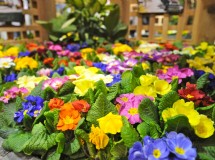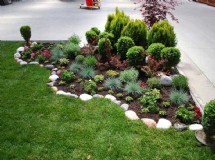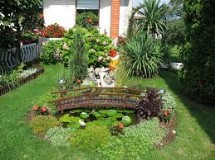- Blue mist plant is a shrub of approximately 4 feet tall that can spread up to 6 feet wide. The shrub is compact and filled with vibrant blue flowers from July to August. The foliage is a grayish-green oval leaf on woody stems. The blooms come in long clusters 12 to 20 inches long. The plant thrives in full sun but is tolerant of partial shade situations. Blue mist dies back in cold zones and is hardy from zone 5 to 9.
- There isn't a soil caryopteris doesn't like. This plant is ideal for neglected nutrient-poor soils. In fact, blue mist prefers little to no fertilization. The incorporation of too much nitrogen causes the plant to produce foliage but not flowers. Temperate zones are the best match for this plant as icy cold winters and scorching summers slow down and even stop the plant's growth. Caryopteris is a drought tolerant plant but needs supplemental watering when establishing. Blue mist can be pruned back to a couple of inches in early spring to allow the plant to come back fresh with less woody large growth.
- The blue mist plant is an attractant for butterflies. Butterflies lay eggs on the underside of plant leaves and a caterpillar hatches. The caterpillar is the butterfly's larval stage which will build a cocoon and overwinter until it metamorphoses. In spring or when temperatures warm enough, the butterfly emerges. The blue mist plant is visited by many types of butterflies and moths who may lay eggs on the caryopteris leaves.
- The blue mist plant is ideal for attracting hummingbirds and butterflies or just as a visually attractive addition to the landscape. The blue coloring sets off almost all color combinations and the airy feeling of the flowers creates a water color effect en masse. It is useful as a border plant between beds and as a container specimen that adds punch to potted designs. If the caterpillars are doing damage to the plant, simply shoot them off with a hard spray of water or manually remove them.
Identification
Cultivation
Caterpillars
Uses
SHARE







































